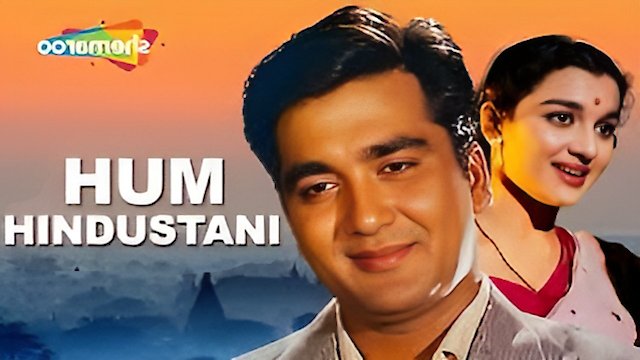
Hum Hindustani
Where to Watch Hum Hindustani

Hum Hindustani is a 1960 Indian film that weaves together themes of patriotism, sacrifice, and the enduring spirit of the common man. Directed by a notable filmmaker of the time, the film showcases a stellar cast led by Sunil Dutt, Joy Mukherjee, and Asha Parekh, who bring to life a narrative that resonates with the ideals of the newly independent nation. The film is set against the backdrop of post-colonial India, a time of awakening and struggle, making it a pertinent reflection of the socio-political landscape of that era.
The story revolves around the challenges faced by ordinary citizens as they grapple with issues of identity, national pride, and social responsibility. Sunil Dutt plays a central role, embodying the essence of a determined and patriotic young man who represents the voice of the common citizen. His character is depicted as compassionate and committed to uplifting his community, often stepping into the shoes of a leader and advocate for the people. Throughout the film, Dutt's performance captures the nuances of a character deeply connected to the values of justice and equality, making him a relatable and inspiring figure.
Joy Mukherjee, another prominent star in the film, adds a playful yet earnest edge to the narrative. His character is often seen engaging in humorous exchanges and light-hearted moments that serve to balance the film's more serious themes. Mukherjee's chemistry with Dutt creates a heartwarming dynamic that reflects the camaraderie and unity among the youth, symbolizing the hope and determination of a generation ready to take on challenges and contribute to the nation’s progress.
Asha Parekh, one of the leading actresses of her time, plays a pivotal role that intertwines romance with a deeper message of women's empowerment and resilience. Her character's journey parallels the struggles and aspirations of women in Indian society, emphasizing their vital role in shaping the future. Parekh's performance is both vibrant and poignant, as she navigates the complexities of love and duty, illustrating the evolving roles of women in a society striving for growth and equality.
The cinematography and musical score of Hum Hindustani complement the film's themes beautifully. The visuals capture the essence of different Indian landscapes, from bustling city life to serene rural settings, reflecting the diversity and richness of the nation. The music, which includes several memorable songs, resonates with the film’s message and serves to enhance the emotional impact of key moments. The songs are not only melodic but also carry lyrics that evoke a sense of pride and unity, reflecting the hopefulness that permeated Indian society during the 1960s.
Hum Hindustani tackles various social issues, including poverty, communal harmony, and the spirit of volunteerism, all of which were critical topics in that era. The film advocates for a collective responsibility among citizens to foster change and support one another, reminding viewers of the importance of standing together in the face of adversity. This message is particularly relevant, as it mirrors the struggles that the country faced in its early years post-independence, encouraging audiences to reflect on their roles as active participants in nation-building.
Moreover, the film's narrative structure allows for subplots that enrich the main storyline. Characters from different walks of life intersect, each bringing their own stories of struggle and triumph. These interactions not only add depth to the plot but also highlight the interconnectedness of individual destinies in the larger tapestry of the nation. The film underscores the notion that every person, regardless of their background, has a part to play in the pursuit of a better tomorrow.
Hum Hindustani ultimately serves as a celebration of citizenship and collective action. Its themes of resilience and unity resonate deeply, elevating it from just a cinematic experience to a cultural artifact that reflects the aspirations of a newly independent India. The performances of the lead actors, combined with a compelling narrative and vibrant music, culminate in a film that is both entertaining and thought-provoking.
As the film progresses, it invites viewers to consider what it means to be a citizen in a rapidly changing world and what sacrifices are necessary to achieve a just society. Hum Hindustani remains a significant film in the annals of Indian cinema, not only for its star-studded cast and engaging narrative but also for its enduring relevance in the discussion of national identity and responsibility. It stands as a reminder of the power of storytelling to inspire change and galvanize communities, making it a timeless classic worth revisiting.
Hum Hindustani is a Art House & International movie released in 1960. Critics and viewers have rated it moderate reviews, with an IMDb score of 7.1..
